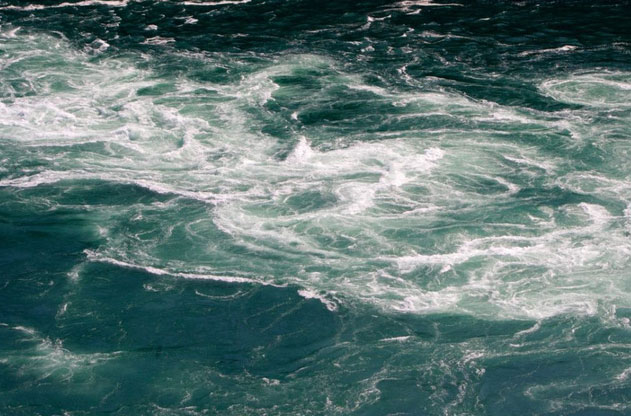The Atlantic convection current is about to collapse, will the 'weather bomb' explode around the world?
Climate change is slowing the convection currents that carry warm water from the tropics to the North Atlantic and will cause the system to completely collapse.
Climate models show that the Atlantic meridian convection current (AMOC) is at its weakest in more than 1,000 years. This "conveyor belt" system gathers currents across the Atlantic Ocean and is likened to the lifeblood of the sea.

Atlantic Convection Current
This is a cycle that includes large flows of warm tropical water to the North Atlantic that helps keep Europe's climate mild, while allowing the tropics a chance to lose excess heat.
According to research published in the journal Nature Climate Change , a complete collapse of the Atlantic convection - which affects weather around the world - would change the structure of the oceans and shift Earth's climate. to a state more like La Niña.
This means more rain and floods in eastern Australia and a worse drought and bushfire season in the US Southwest. People on Australia's east coast have felt the power of La Niña, with record flooding in New South Wales and Queensland.
Meanwhile, in the southwestern part of North America, a record drought and severe wildfires put a great strain on emergency services and agriculture. The 2021 fire alone is estimated to have cost at least $70 billion.
If the AMOC is disturbed, northern Europe will become colder, temperatures in some areas could drop as much as 8⁰C. In contrast, Southern Hemisphere temperatures will increase, especially around Antarctica.
Earth's climate is dynamic and ever-changing. Currently, however, greenhouse gas emissions are putting pressure on the entire world climate system.
Over the past few decades, the Atlantic circulation has been found to be slowing down, and this has scientists worried.
Why is there a slowdown on? One of the obvious causes is global warming, the melting of the polar ice caps in Greenland and Antarctica.
When these ice sheets melt, they dump large amounts of fresh water into the oceans, messing with ocean currents. This melting rate will increase in the coming decades if global warming continues unabated.
The excess heat of the tropical Atlantic will push more warm moist air up into the upper troposphere (about 10km into the atmosphere), causing dry air to spill down into the eastern Pacific.
This situation pushes the tropical Pacific Ocean into a La Niña-like climate.
Never before in Earth's history has the Earth's climate system been so disturbed by changes in the composition of gases in the atmosphere as it is today.
- The wreck contains more than 2,000 bombs that could easily explode from World War II
- Super wallpaper ... bomb
- The mountain of North Korea tried thermonuclear bombs to explode
- Results if atomic bombs explode in the deepest ocean trench
- Greenhouse gas convection helps drying, drying agricultural products all night and day
- The most powerful thermonuclear bombs in the world
- Strange: Starfish exploded massively in America
- The world's largest atomic bomb explosion 54 years ago
- Why does the phone explode while charging?
- Inside the machine recreates the nuclear bomb and the black hole Universe is located in Mexico
- Weather makes world history
- Seeing strange manholes in the yard, crawling down to discover the majestic secret
 Surprised: Fish that live in the dark ocean still see colors
Surprised: Fish that live in the dark ocean still see colors Japan suddenly caught the creature that caused the earthquake in the legend
Japan suddenly caught the creature that caused the earthquake in the legend A series of gray whale carcasses washed ashore on California's coast
A series of gray whale carcasses washed ashore on California's coast Compare the size of shark species in the world
Compare the size of shark species in the world